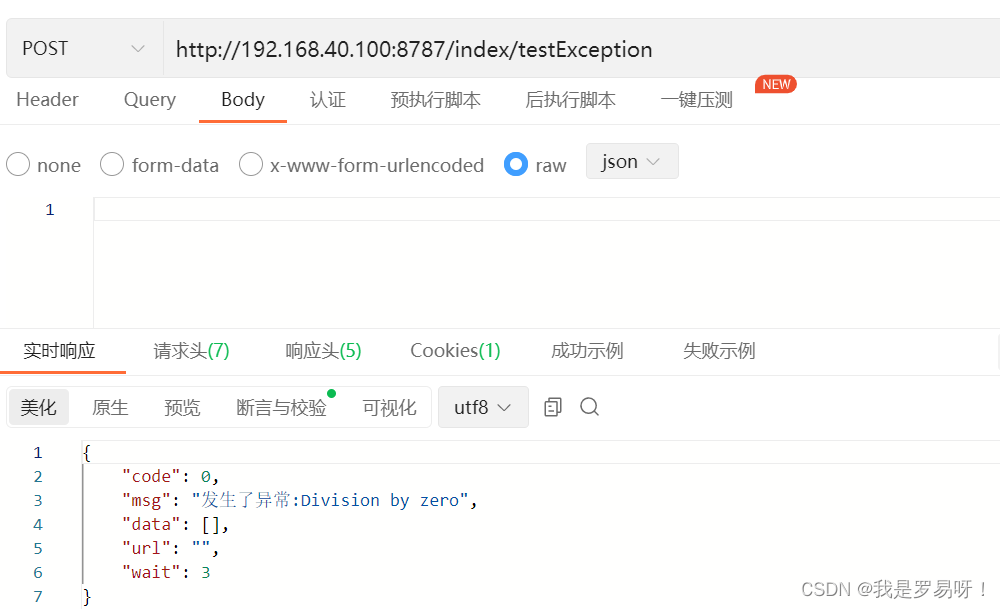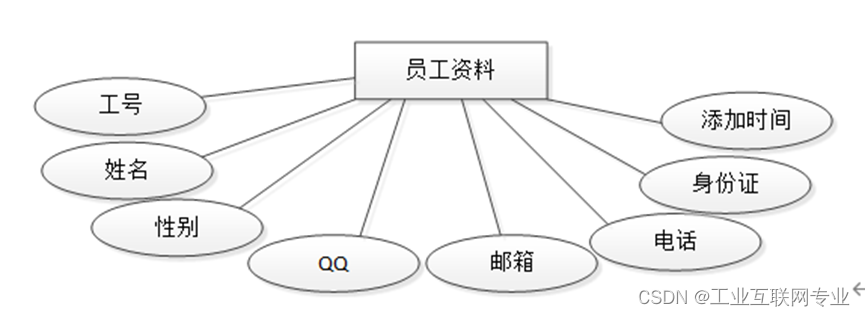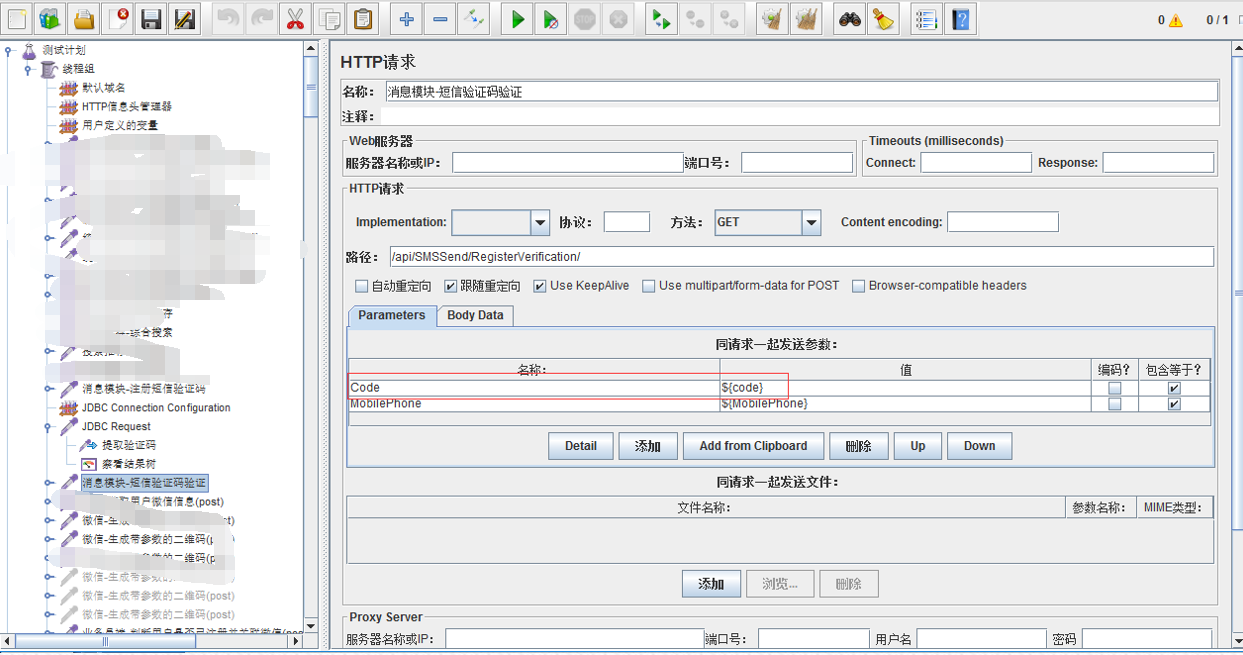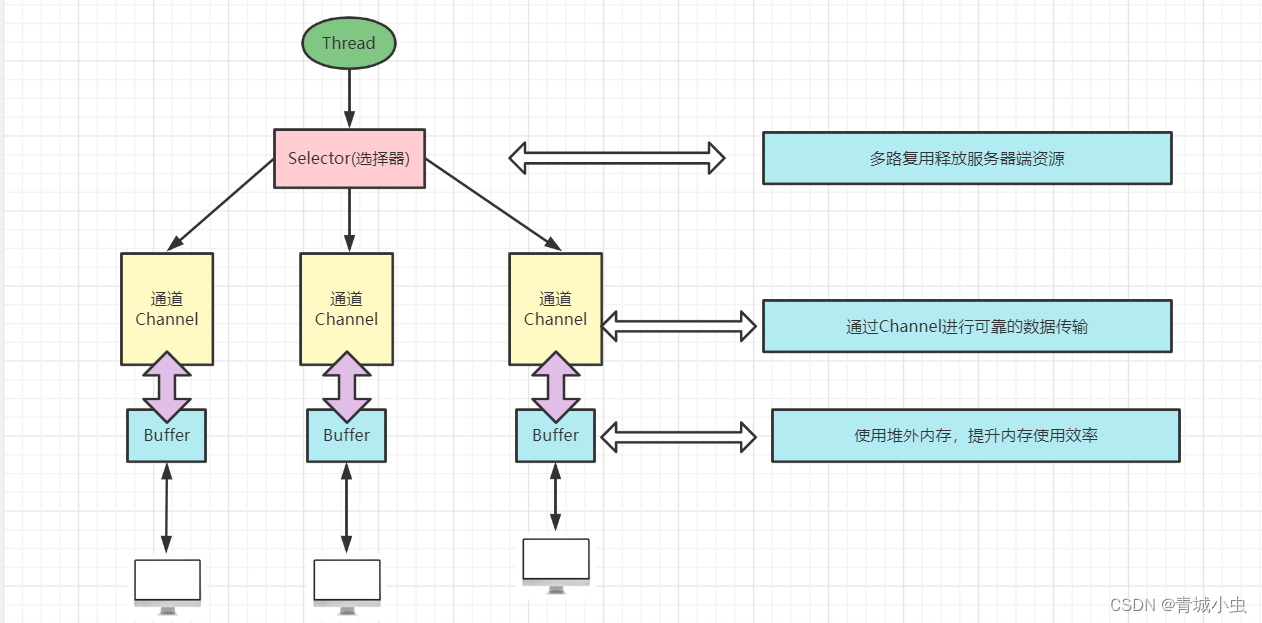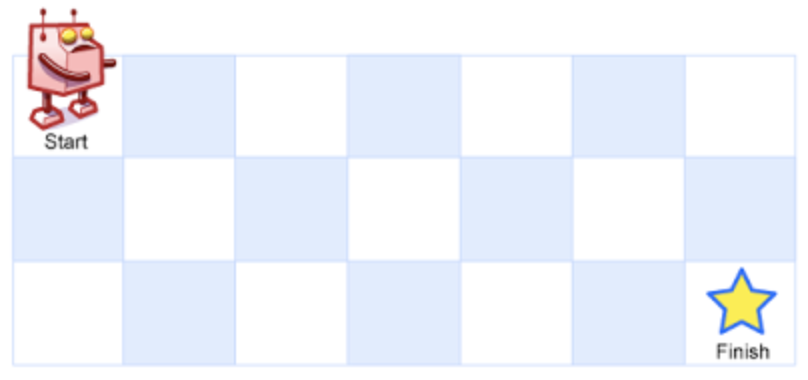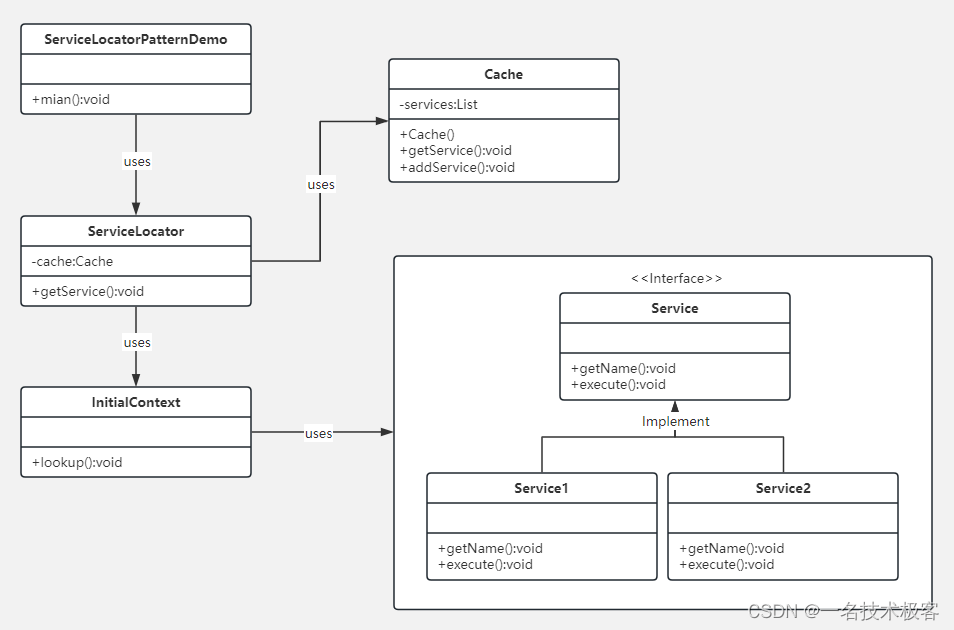
✅作者简介:大家好,我是橘橙黄又青,一个想要与大家共同进步的男人😉😉
🍎个人主页:橘橙黄又青-CSDN博客
1.什么是栈
1.1栈的概念及结构
栈:一种特殊的线性表,其只允许在固定的一端进行插入和删除元素操作。进行数据插入和删除 操作的一端称为栈顶,另一端称为栈底。栈中的数据元素遵守后进先出LIFO(Last In First Out) 的原则。
压栈:栈的插入操作叫做进栈/压栈/入栈,入数据在栈顶。
出栈:栈的删除操作叫做出栈。出数据也在栈顶。
这种结构类似于弹夹:遵守后进先出的原则

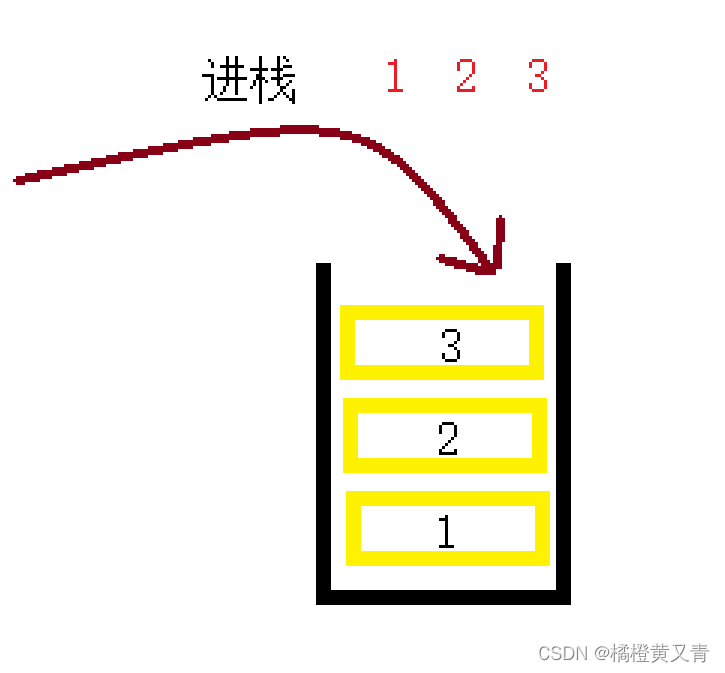

1.2栈的实现
栈的实现一般可以使用数组或者链表实现,相对而言数组的结构实现更优一些。因为数组在尾上 插入数据的代价比较小。



2.栈的实现
这里我们讲解数组(顺序表)实现
2.1栈的初始化和销毁
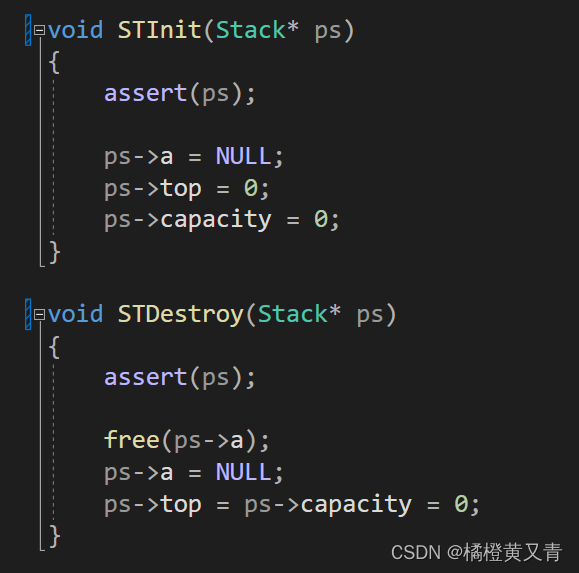
这里顺序表一样,a是数组,free是释放一块连续的空间。
2.2栈的节点创建
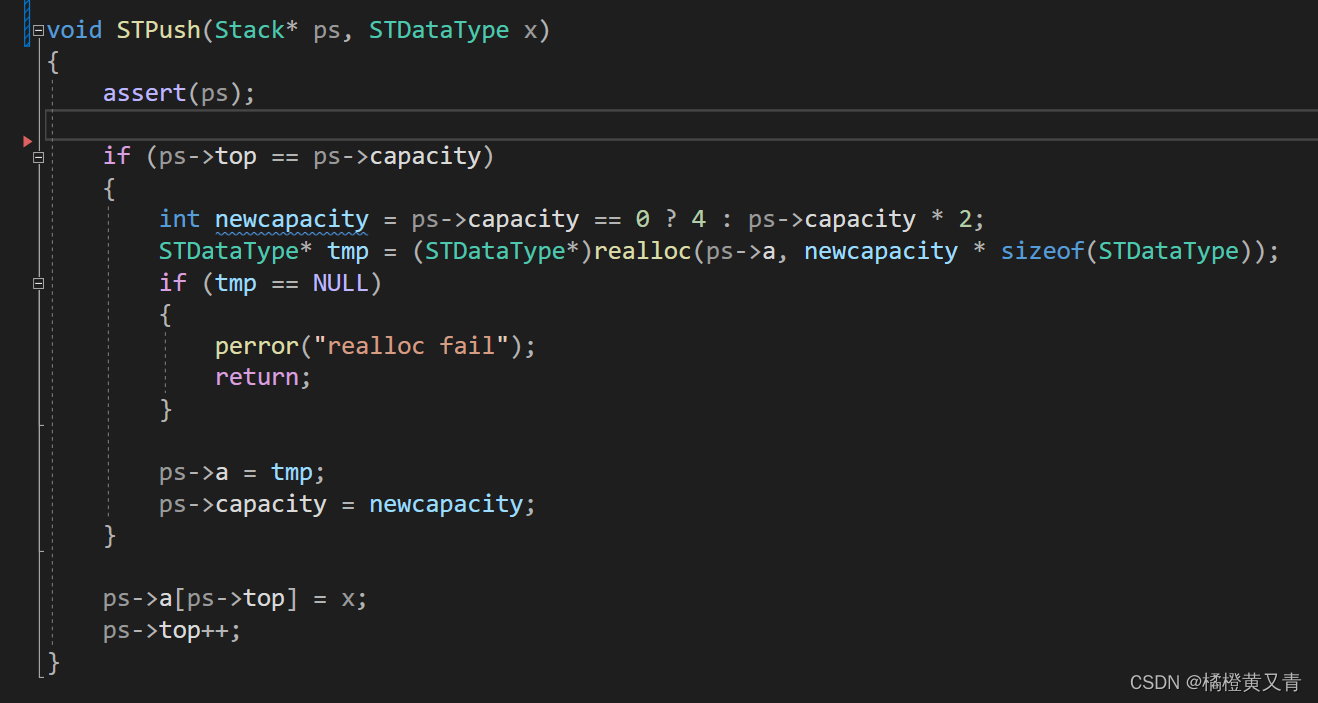
这里注意的是创建后,记得top++;
2.3出栈和返回栈顶元素

2.4返回栈的数据个数和判断栈为空
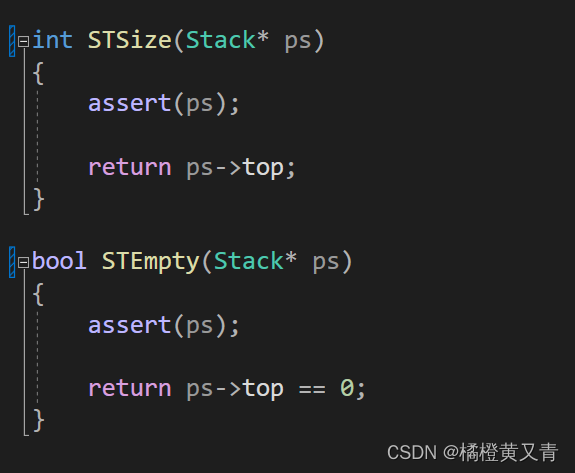
2.5测试代码:

这里我们讲一个点,我们只创建一个栈Stack s,如果要创建两个栈,最好使用结构体包装起来,比如说:
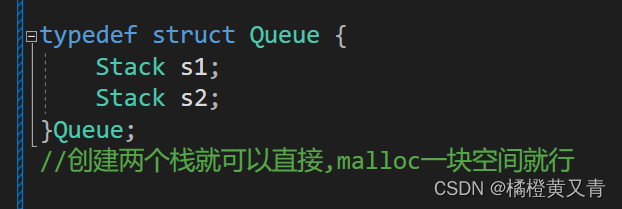
这样就可以直接创建两个顺序表了。
3.什么是列队
3.1队列的概念及结构
列队列队其实可以理解为排队
队列:只允许在一端进行插入数据操作,在另一端进行删除数据操作的特殊线性表,队列具有先 进先出FIFO(First In First Out) 入队列:进行插入操作的一端称为队尾 出队列:进行删除操作的一 端称为队头。

4.列队的实现
队列也可以数组和链表的结构实现,使用链表的结构实现更优一些,因为如果使用数组的结构, 出队列在数组头上出数据,效率会比较低。
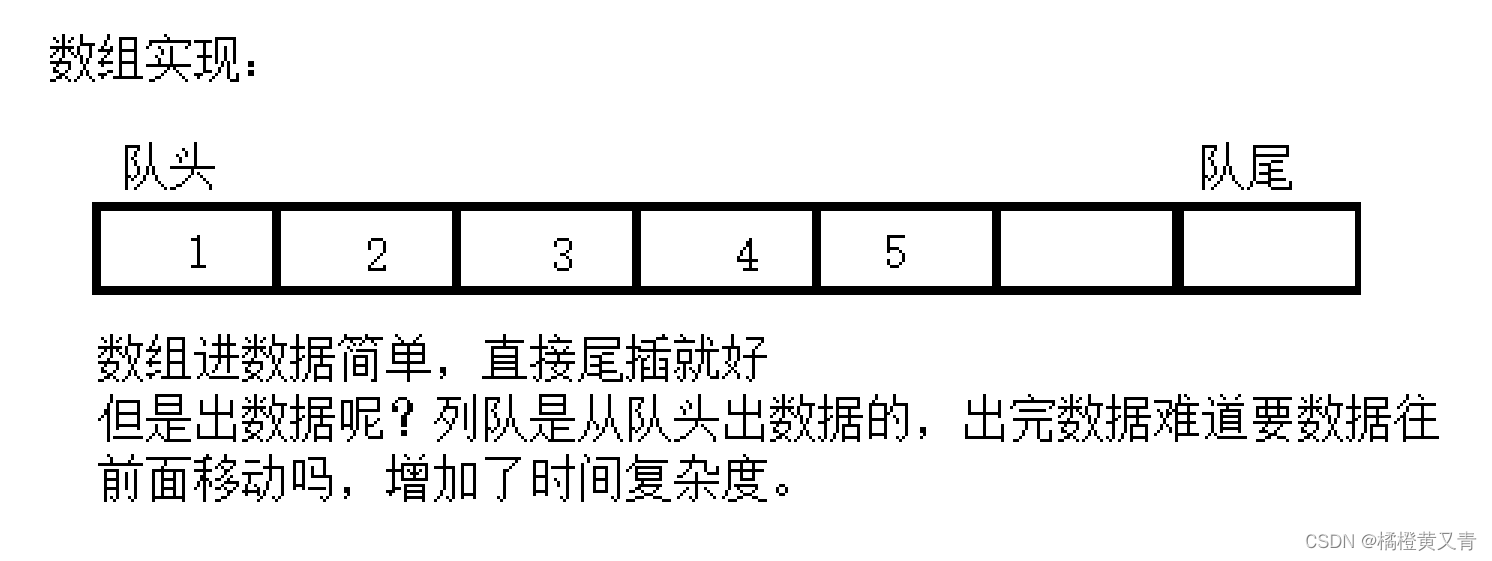

所以我们选择链表实现。
4.1列队初始化和销毁

4.2入队列

4.3出队列
 出队列是链表的头删操作。
出队列是链表的头删操作。
4.4找到列队头尾
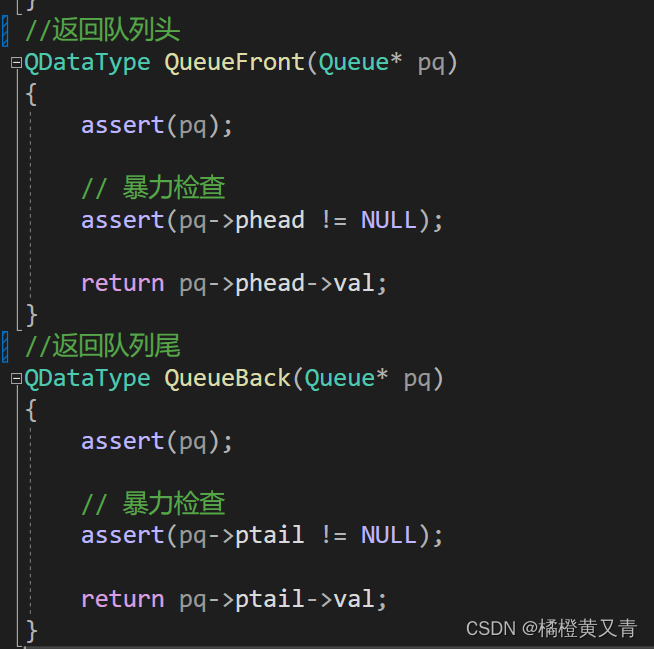
4.5列队判断为空和数据个数
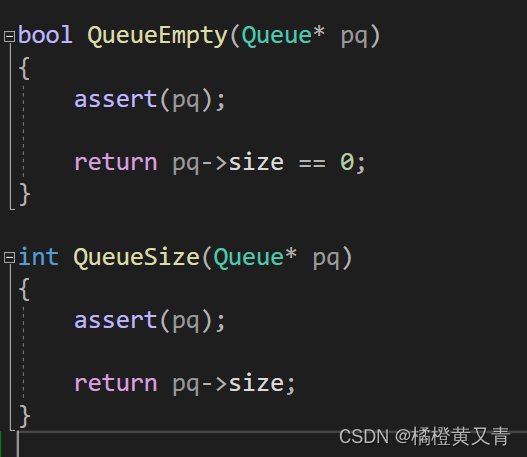
5.代码
5.1列队代码:
Queue.h
#pragma once
#include<stdlib.h>
#include<stdbool.h>
#include<assert.h>
typedef int QDataType;
typedef struct QueueNode
{
int val;
struct QueueNode* next;
}QNode;
入队列
//void QueuePush(QNode** pphead, QNode** pptail);
出队列
//void QueuePop(QNode** pphead, QNode** pptail);
typedef struct Queue
{
QNode* phead;
QNode* ptail;
int size;
}Queue;
//初始化
void QueueInit(Queue* pq);
//列队销毁
void QueueDestroy(Queue* pq);
// 入队列
void QueuePush(Queue* pq, QDataType x);
// 出队列
void QueuePop(Queue* pq);
//列队前
QDataType QueueFront(Queue* pq);
//列队尾
QDataType QueueBack(Queue* pq);
//判断是否为空
bool QueueEmpty(Queue* pq);
//数据个数
int QueueSize(Queue* pq);
Queue.c
#include"Queue.h"
//初始化
void QueueInit(Queue* pq)
{
assert(pq);
pq->phead = NULL;
pq->ptail = NULL;
pq->size = 0;
}
void QueueDestroy(Queue* pq)
{
assert(pq);
QNode* cur = pq->phead;
while (cur)
{
QNode* next = cur->next;
free(cur);
cur = next;
}
pq->phead = pq->ptail = NULL;
pq->size = 0;
}
// 入队列
void QueuePush(Queue* pq, QDataType x)
{
assert(pq);
QNode* newnode = (QNode*)malloc(sizeof(QNode));
if (newnode == NULL)
{
perror("malloc fail");
return;
}
newnode->val = x;
newnode->next = NULL;
if (pq->ptail)
{
pq->ptail->next = newnode;
pq->ptail = newnode;
}
else
{
pq->phead = pq->ptail = newnode;
}
pq->size++;
}
// 出队列
void QueuePop(Queue* pq)
{
assert(pq);
// 0个节点
// 温柔检查
//if (pq->phead == NULL)
// return;
// 暴力检查
assert(pq->phead != NULL);
// 一个节点
// 多个节点
if (pq->phead->next == NULL)
{
free(pq->phead);
pq->phead = pq->ptail = NULL;
}
else
{
QNode* next = pq->phead->next;
free(pq->phead);
pq->phead = next;
}
pq->size--;
}
//返回队列头
QDataType QueueFront(Queue* pq)
{
assert(pq);
// 暴力检查
assert(pq->phead != NULL);
return pq->phead->val;
}
//返回队列尾
QDataType QueueBack(Queue* pq)
{
assert(pq);
// 暴力检查
assert(pq->ptail != NULL);
return pq->ptail->val;
}
bool QueueEmpty(Queue* pq)
{
assert(pq);
return pq->size == 0;
}
int QueueSize(Queue* pq)
{
assert(pq);
return pq->size;
}
Test.c
//队列,链表实现
#include"Queue.h"
int main()
{
Queue q;
QueueInit(&q);
QueuePush(&q, 1);
QueuePush(&q, 2);
printf("%d ", QueueFront(&q));
QueuePop(&q);
QueuePush(&q, 3);
QueuePush(&q, 4);
while (!QueueEmpty(&q))
{
printf("%d ", QueueFront(&q));
QueuePop(&q);
}
QueueDestroy(&q);
return 0;
}5.1栈代码:
Stack.h
#pragma once
#include<stdio.h>
#include<stdlib.h>
#include<stdbool.h>
#include<assert.h>
//方便以后改数据类型
typedef int STDataType;
//顺序表
typedef struct Stack
{
STDataType* a;
int top;
int capacity;
}Stack;
//初始化
void STInit(Stack* ps);
//栈销毁
void STDestroy(Stack* ps);
//进栈
void STPush(Stack* ps, STDataType x);
//出栈
void STPop(Stack* ps);
//出栈顶元素
STDataType STTop(Stack* ps);
//链表数据个数
int STSize(Stack* ps);
//判断链表为不为空
bool STEmpty(Stack* ps);
Stack.c
#include"Stack.h"
void STInit(Stack* ps)
{
assert(ps);
ps->a = NULL;
ps->top = 0;
ps->capacity = 0;
}
void STDestroy(Stack* ps)
{
assert(ps);
free(ps->a);
ps->a = NULL;
ps->top = ps->capacity = 0;
}
void STPush(Stack* ps, STDataType x)
{
assert(ps);
if (ps->top == ps->capacity)
{
int newcapacity = ps->capacity == 0 ? 4 : ps->capacity * 2;
STDataType* tmp = (STDataType*)realloc(ps->a, newcapacity * sizeof(STDataType));
if (tmp == NULL)
{
perror("realloc fail");
return;
}
ps->a = tmp;
ps->capacity = newcapacity;
}
ps->a[ps->top] = x;
ps->top++;
}
void STPop(Stack* ps)
{
assert(ps);
assert(!STEmpty(ps));
ps->top--;
}
STDataType STTop(Stack* ps)
{
assert(ps);
assert(!STEmpty(ps));
return ps->a[ps->top - 1];
}
int STSize(Stack* ps)
{
assert(ps);
return ps->top;
}
bool STEmpty(Stack* ps)
{
assert(ps);
return ps->top == 0;
}Test.c
//栈,顺序表实现
#include"Stack.h"
int main()
{
Stack s;
STInit(&s);
STPush(&s, 1);
STPush(&s, 2);
STPush(&s, 3);
int top = STTop(&s);
printf("%d ", top);
STPop(&s);
top = STTop(&s);
printf("%d ", top);
STPop(&s);
STPush(&s, 4);
STPush(&s, 5);
while (!STEmpty(&s))
{
int top = STTop(&s);
printf("%d ", top);
STPop(&s);
}
STDestroy(&s);
return 0;
}今天的分享就到这里了,点个赞,谢谢。


